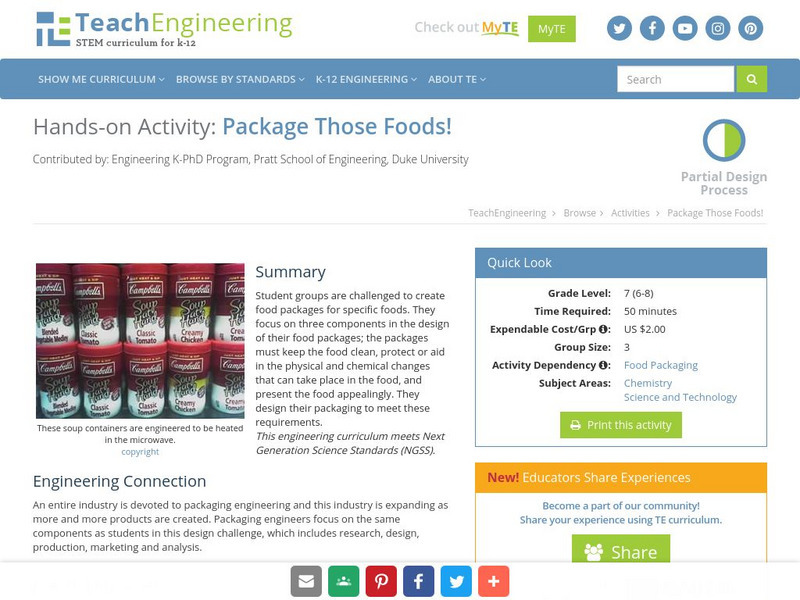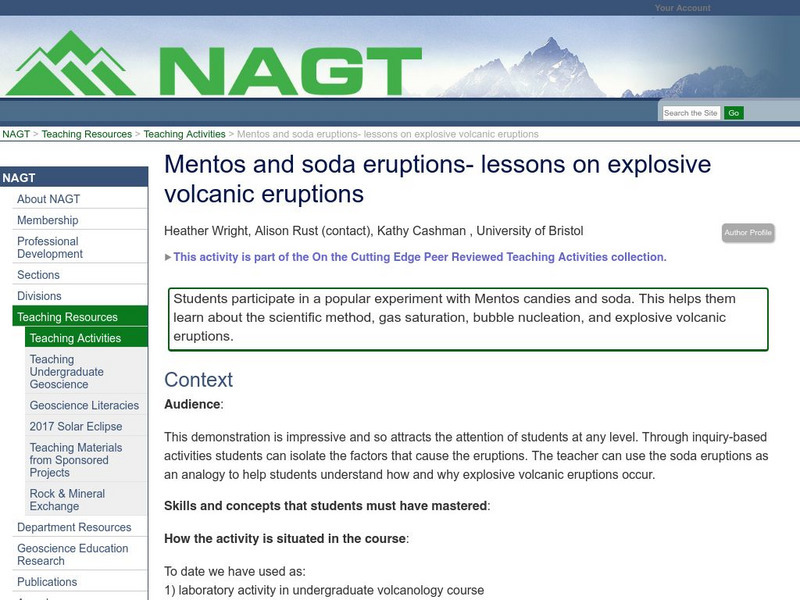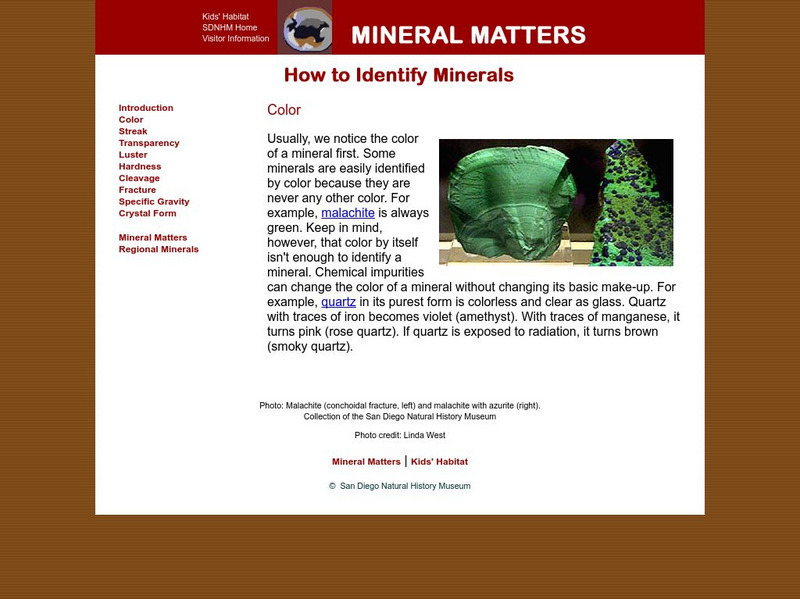Other
Educational Innovations: Diaper Polymer Activities [Pdf]
What can you do with diaper polymer? Check out these six quick student experiments involving the chemical used in diapers.
TeachEngineering
Teach Engineering: Package Those Foods!
This activity provides students with the opportunity to create a food package for a specific food. The students have three components to focus on in the design of their food package. The package will have to keep the food clean, protect...
National Association of Geoscience Teachers
Serc: Mentos and Soda Eruptions: Lessons on Explosive Volcanic Eruptions
Students will learn about volcanic eruptions, the scientific method, gas saturation, and bubble nucleation by participating in a popular experiment with Mentos candies and soda.
San Diego Natural History Museum
San Diego Natural History Museum: Mineral Matters: Color
Don't be fooled! While color is one way to identify a mineral, it can often be misleading. Quartz is one example of a mineral that can change colors depending on its chemical make-up.
Science Struck
Science Struck: Can Diamonds Be Melted or Dissolved?
While diamonds are extremely hard and strong, they are not indestructible. Learn how diamonds can be burned, melted, or dissolved.
![Educational Innovations: Diaper Polymer Activities [Pdf] Activity Educational Innovations: Diaper Polymer Activities [Pdf] Activity](https://static.lp.lexp.cloud/images/attachment_defaults/resource/large/FPO-knovation.png)


